Overcoming our environmental policy inertia

With the start of 2024 and a new cabinet in charge, let's make a list of major environmental policy initiatives in Bangladesh that have been stuck in a limbo for many years.
I start with my personal favourite: the revision of Bangladesh Climate Change Strategy and Action Plan (BCCSAP), 2009. This was initiated back in 2018, just before the end of the BCCSAP's 10-year period. Although during 2010-2018, the BCCSAP ushered in the implementation of 624 projects by spending Tk 3,198 crore from the Bangladesh Climate Change Trust Fund (BCCTF), for some reason it was the German government that supported the BCCSAP revision. In different forums, we randomly learnt about the progress of this revision, but apparently received no formal updates from the government lately, except on two occasions: i) in his budget speech for FY2023-24, the finance minister acknowledged the updating of BCCSAP; and ii) in the latest climate budget report (2023-24), the draft of revised BCCSAP structure is briefly touched upon in the Executive Summary, but without any elaboration in the main text.
Despite the sluggish pace of the BCCSAP revision, over the past five years, the government approved the Bangladesh Delta Plan 2100 (BDP2100) in 2018, the updated Nationally Determined Contributions (NDCs) in 2021, the National Adaptation Plan of Bangladesh (2023-2050) (NAP2050) in 2022, and the Mujib Climate Prosperity Plan 2022-2041 (MCPP2041) in 2022—all focusing on a resilient Bangladesh. I believe the government shouldn't invest more time in revising the BCCSAP, which apparently becomes obsolete under the changed climatological, political and financing scenarios under the changing climate. (In 2009, the revised National Adaptation Programme of Action (NAPA) became obsolete in the same way because of the then brand new BCCSAP).
The new government should focus on two actions: first, identify synergies among the BDP2100, NAP2050 and MCPP2041, and prepare a guideline for the BCCTF to allocate resources in absence of an updated BCCSAP. Second, the government should prioritise and start implementing the NAP2050 interventions, which are pending for more than one year. These could give the government agencies and development partners the much-needed focus to channel available and anticipated resources.
The slow pace of environmental policy formulation and execution described above is quite common in Bangladesh. First conceptualised in the 1980s, the National Conservation Strategy (NCS) holds the record of the longest approval time. Despite several attempts between 1993 and 2013, the draft NCS couldn't get the cabinet's approval. In the last attempt in 2015-2016, with BCCTF's money, BFD and IUCN updated the NCS with the help of 25 Bangladeshi experts. Seven years later, the Ministry of Environment, Forest and Climate Change (MoEFCC) made the final Bangladesh National Conservation Strategy (2021-2036) public.
On an opposite trend, one of the quickest legislative enactments was of the Climate Change Trust Act, 2010. It got approved in October 2010, just 13 months after the government approved the BCCSAP (2009)—implementation of which is the basis of this law. Similarly, soon after the 15th Amendment of the constitution, which added Article 18A and made biodiversity conservation a responsibility of the state, we saw the updated Wildlife (Conservation and Security) Act, 2012. Five years later, the new Protected Area Management Rules, 2017 was enacted under this act, giving Bangladesh's 20-year experience of people-centric natural resource management a legal footing. In the same vein, we also saw formulation of the Ecological Critical Area Management Rules, 2016 (under the Bangladesh Environment Conservation Act, 1995), and the long-pending Bangladesh Biodiversity Act, 2017.
Although many of these legislations assist the Forest Department to execute its responsibilities, the National Forest Policy, drafted in 2016, hasn't been approved by the cabinet yet. Drafted in the same year, Bangladesh Forestry Master Plan (2017-2036) is experiencing the same delay in approval. On the other hand, the Bangladesh Wildlife Conservation Master Plan (2015-2035) was prepared by international consulting firms in 2015, under the World Bank-supported Strengthening Regional Cooperation for Wildlife Protection (SRCWP) project. According to the 8th Five-Year Plan (2020-2025), the country's conservation efforts should be as per this master plan. But there is no mention of this plan in the crucial biodiversity documents, such as the fifth (2015) and sixth (2019) national reports to the Convention on Biological Diversity (CBD) or the National Biodiversity Strategy and Action Plan (NBSAP) (2016-2021).
Speaking of the NBSAP, this policy instrument joins several other environmental plans prepared over the last 20 years, which failed miserably since the government hardly took any action to implement them over the stipulated strategic period. Other such plans include the NAPA (2009), the Bangladesh Climate Change and Gender Action Plan (ccGAP, 2013), and the Bangladesh Country Investment Plan for Environment, Forestry and Climate Change (2016-2021). The Bangladesh Capacity Development Action Plan for Sustainable Environmental Governance (CDAP 2007) is another prime example of being obsolete. This plan was supposed to synergise three Rio Conventions, namely the CBD, the United Nations Framework Convention on Climate Change (UNFCCC), and the United Nations Convention to Combat Desertification (UNCCD). The government has hardly ever acknowledged the CDAP (2007) since its approval, let alone implemented it.
Finally, another group of policies includes those which never took off after initial conceptualisation. For example, in the first NBSAP (2004), the National Biodiversity Policy was outlined in detail. I can't remember hearing about it ever again.
Our new government will soon start preparing a new NBSAP for 2030/2050 in response to the Kunming-Montreal Global Biodiversity Framework (GBF) under the CBD, and updating the NDCs (2021). Being forward looking is great. But should we continue being a country that makes beautiful environmental policy instruments and then forgets to implement them?
Dr Haseeb Md Irfanullah is an independent consultant working on environment, climate change, and research systems. He is a visiting research fellow at the University of Liberal Arts Bangladesh (ULAB). He can be reached at [email protected].
Views expressed in this article are the author's own.
Follow The Daily Star Opinion on Facebook for the latest opinions, commentaries and analyses by experts and professionals. To contribute your article or letter to The Daily Star Opinion, see our guidelines for submission.

 For all latest news, follow The Daily Star's Google News channel.
For all latest news, follow The Daily Star's Google News channel. 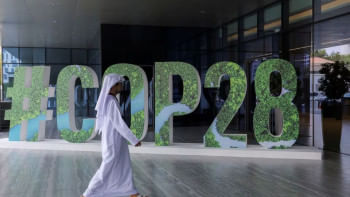
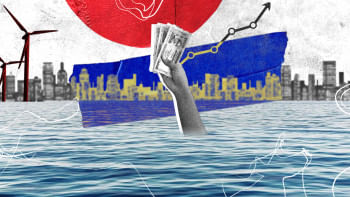
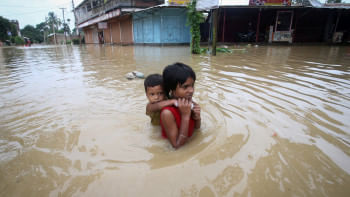



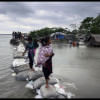
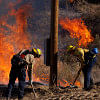

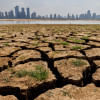


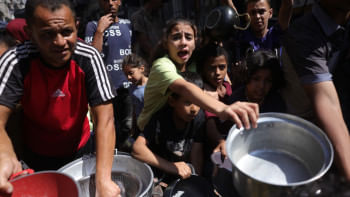
Comments